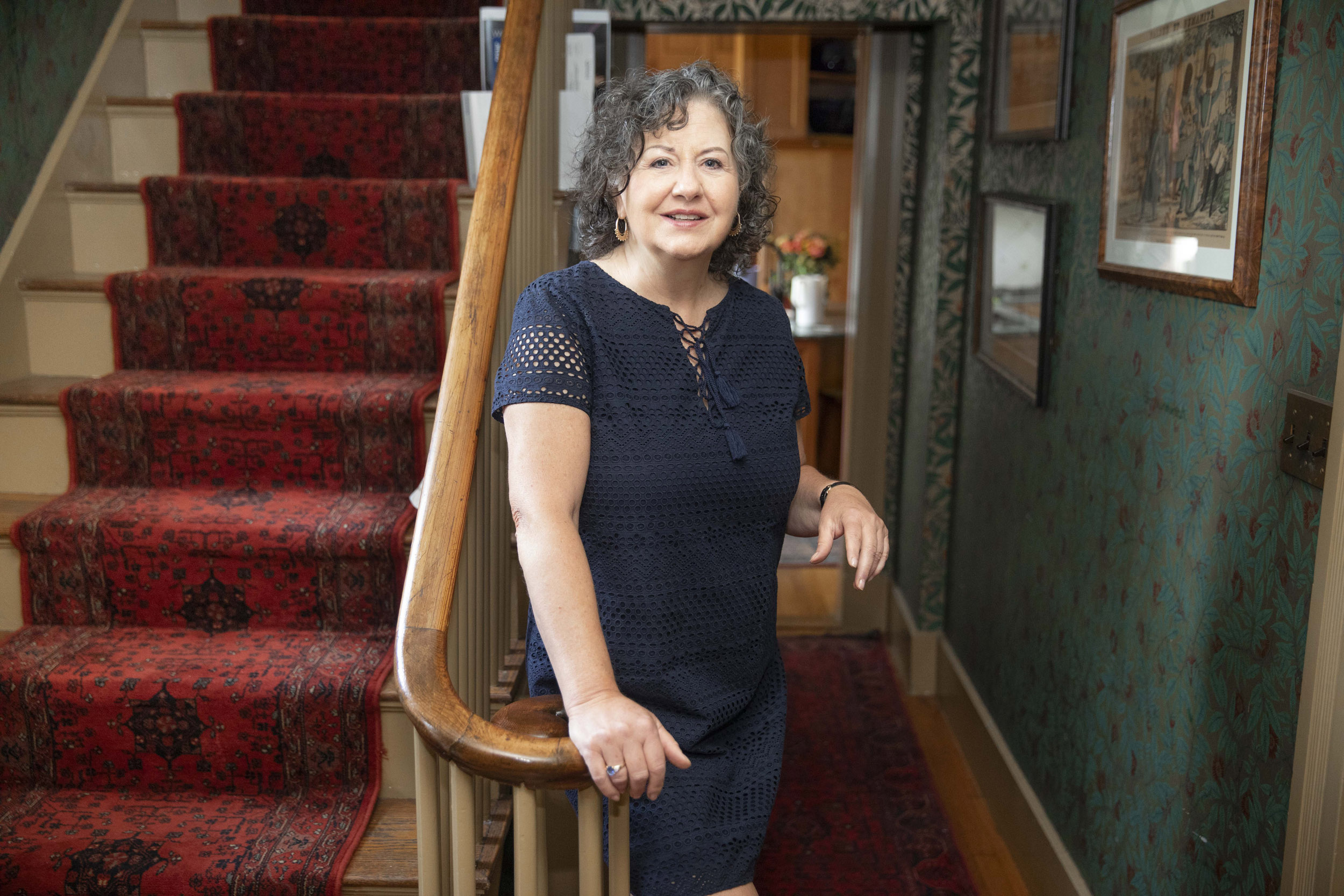
Kris Snibbe/Harvard Staff Photographer
Let’s not be strangers
‘Seeing Others’ author Michèle Lamont has an escape plan for people fed up with years of bitter division
Recognition happens when a person feels valued and truly visible in their community and the culture at large. Smartphones can’t provide it. Nor can the latest chatbot.
“It’s something only other human beings can give you,” said Michèle Lamont, a professor of sociology and African and African American Studies and the Robert I. Goldman Professor of European Studies.
In her new book, “Seeing Others: How Recognition Works — And How It Can Heal a Divided World,” Lamont distills nearly four decades of research into a nimble argument traversing vast territory, from emerging Gen Z narratives on race and gender to the Hollywood creatives bringing recognition to diverse groups.
“The book is a call to recenter our understanding of inequality,” said Lamont. “It’s not only about distribution of resources. It’s also about how people create their identity, how they make sense of their place in the world.”
“Think of the number of recent series that are celebrating rich people, whether it’s ‘Succession’ or ‘White Lotus.’ There are very few working-class heroes in our media today.”
Michèle Lamont
One chapter focuses on artists and entertainers whose storytelling broadens the circle of people who matter. Comedian W. Kamau Bell, host of CNN’s “United Shades of America,” uses a technique Lamont calls “reflecting reality,” or circulating stories that defy stereotypes. Tanya Saracho, executive producer and showrunner of the Starz series “Vida,” favors “emotional modulation,” or shifting perceptions by pulling the heartstrings.
Another chapter draws from interviews with dozens of college students, initially collected for an academic paper on the evolving American Dream. Lamont admires the students’ embrace of “ordinary universalism,” or focusing on commonalities over differences. However, she’s quick to note that they too fail to recognize all groups, including older Americans. “I argue in the book that the Boomers are allies,” Lamont, a Boomer herself, said in an interview.
Other chapters probe what Lamont calls “neoliberal scripts of self” — or how notions of worthiness are so closely tied to economic achievements in modern America. This leaves poor and working-class people feeling culturally alienated, if not downright invisible, she argues. As evidence, she cites the surfeit of wealthy characters, with their vividly posh lifestyles, on screens big and small.
“Think of the number of recent series that are celebrating rich people, whether it’s ‘Succession’ or ‘White Lotus,’” Lamont said. “There are very few working-class heroes in our media today.”
Still, she insists that inequality can’t be understood in strictly material terms. When research subjects are asked about experiences that feel discriminatory, most don’t focus on a lack of affordable housing or quality schools, she says. “The things they talk most about are assaults on the self. It has to do with feeling ignored, underestimated, or overlooked.”
The author rejects the idea that recognizing racial, ethnic, and gender identities distracts from economic divisions, citing her decades of research on group boundaries. Rather, she advocates for devising new narratives with positive representations for all. At one point, Lamont suggests that the politics of recognition can even break barriers between those at opposite political poles.
“Few acknowledge that there is a common quest for recognition between the white working class who support right-wing populist candidates and progressive groups of LGBTQ+ people and anti-racist advocates,” she writes.
Lamont closes the book with an appeal to upper-middle-class parents, whose patterns of self-segregation, she argues, are an underappreciated barrier to unity and empathy in American life.
“We talk a lot about racial segregation in the U.S., but the enormous increase in class segregation, in my view, is equally egregious,” Lamont said. “It’s becoming more difficult for upper-middle-class people to understand the plight of the poor.”
By detailing how stigma has been reduced historically for certain groups, such as couples in same-sex marriages and people who are HIV-positive, Lamont believes she can encourage readers to help set in motion similar changes for others, including religious minorities, immigrants, and overwhelmed caregivers.
“The book is very hopeful,” she said. “It helps people understand how they can contribute to creating a more inclusive world, even in those discouraging moments when you can see things going backwards.”




